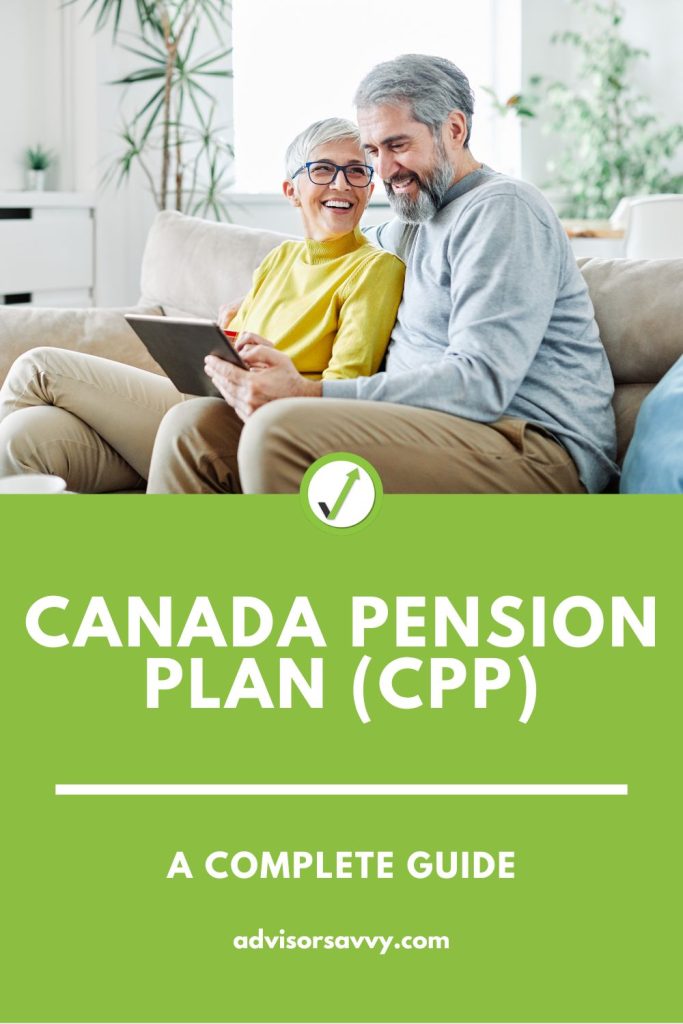
There are a ton of benefits and programs available in Canada. Although, if you don’t know what they are and what’s available to you, it’s hard to take advantage of what they have to offer. Understanding the Canada Pension Plan is crucial for all Canadians in the workforce. This applies to both employers and employees. In this guide, we analyze the CPP and the QPP, how they work, eligibility, and payment calculations. Continue reading to understand all the ins and outs of the Canada Pension Plan!

Table of contents
What is the Canada Pension Plan?
The Canada Pension Plan (CPP) is one of Canada’s many retirement funds. Like any other pension plan, this is a taxable benefit. It primarily serves as an income replacement upon retirement. Although, there are other benefits available under CPP, such as the death benefit and the disability pension. However, the majority of Canadians use CPP for the retirement benefits.
Once a person qualifies for the CPP retirement plan, they are entitled to the payment for as long as they live. But, to qualify, each applicant must have reached age 60 and made at least one contribution to the fund.
Note that the CPP is not an automatic payment plan. Interested retirees must first apply to the Canadian government after meeting relevant requirements. Making this application in advance is advisable. This is because processing payments can take a while.

Match to your perfect advisor now.
Getting started is easy, fast and free.
What is the Quebec Pension Plan?
The Quebec Pension Plan is an initiative of the provincial government. This plan is intended to offer financial coverage to people who have worked in the province of Quebec. It operates as a mandatory public insurance scheme for workers above 18 who earn above $3,500. This means these workers and their employers contribute to this fund to keep it running.
The payment activates whenever these persons die, retire, or suffer a disability. In such cases, they, or their families, are entitled to some money. There are two essential things to note about this pension plan. For starters, the amount each person receives under this plan varies. It depends on diverse factors like age and employment earnings. Then, applicants must not have stopped working before they are entitled to this fund. The only condition is the retiree must have contributed to the QPP for at least a year. This applies even if they worked outside Quebec or currently live outside the province. These eligible applicants are still entitled to the pension fund.
QPP payments become ripe for receipt once an applicant turns 65. This entitles them to full pension payments upon retirement. But, interested applicants can apply to receive this payment earlier. These early applications may start from the age of 60. Yet, it will only succeed if the person has made enough contributions to the pension plan.
The only downside is the pension payment will be significantly reduced. Like the CPP, QPP payments are not automatic. Interested retirees must apply for receiving payments. Filing this application about three months before the receipt date is advisable. That way, the government has enough time to assess and approve the application.
When were the Canada and Quebec Pension Plans devised?
The Canada Pension Plan started in April 1965. It follows the launch of the Canadian social security system. The Quebec Pension Plan was launched in January 1966. But, it was first established in 1965 alongside the CPP.
Related Reading: How much will CPP and OAS increase in 2023?
How Does the Canada Pension Plan Work?
The Canada Pension Plan operates as a contributory social insurance program. Therefore, all employed workers earning above the exemption amount must contribute to the fund. The fund is controlled by the Canada Pension Plan Investment Board (CPPIB). These contributions are compulsory until a person turns 65. From that age, it becomes voluntary if the person keeps working until they turn 70. Applicants become eligible once they turn 60 and have contributed to the fund at least once. They can send in their applications to the Canadian government when they want to start receiving payments.
CIBC Investor’s Line Offer
Up to $6.95 per online stock or ETF trade. Plus, there’s no minimum account balance.
How many years is a full pension in Canada?
Eligible applicants receive the Canada Pension Plan for the rest of their lives.
How many years do you have to work to get a full pension in Canada?
Regarding the Canada Pension Plan, it does not matter how long a person has worked. All eligible persons will receive a full pension and are entitled to the CPP. The only difference is that earnings and contributions affect each person’s payout. In other words, the amount of years of service and how much you paid into the plan affects whether or not you get a full pension from CPP.
How much is the Canada Pension Plan?
An eligible person’s current maximum monthly payout from the CPP is $1,306.57. That is provided the applicant starts receiving the pension from age 65. On average, eligible pensioners receive about $811.21 a month. The sums vary depending on each person’s unique situation.
Applicants who have an account with My Service Canada can get direct estimates. But, this is only when they are signed into their accounts. However, there is an alternative option to getting these figures. This is the Canadian Retirement Income Calculator. Using this tool allows you to estimate how much your monthly benefit will be so you can better prepare for retirement.
How is Canada Pension Plan Calculated?
There are two ways of calculating the Canada Pension Plan. These are through the Canadian Retirement Income Calculator or via a manual process. Using the calculator is an automatic process that takes about thirty minutes. Below, we consider how to calculate CPP contributions manually.
- First, start with calculating the basic pay and exemption. Then, divide the yearly exemption figures by the total pay periods in the particular year. This basic exemption chart can help.
- Second, calculate the pensionable income. This consists of the gross pay, allowances, and other taxable benefits.
- Third, deduct the basic pay and exemption earlier calculated from the pensionable income.
- Finally, multiply the resulting figures by the year’s CPP contribution rate. But, make sure not to exceed the maximum figures. This will show how much CPP contributions the applicant is expected to pay.
The calculation can be a bit complicated! Need help calculating CPP benefits for your retirement plans? A financial advisor can help.
CIBC Investor’s Line Offer
Up to $6.95 per online stock or ETF trade. Plus, there’s no minimum account balance.
Are pension plan contributions tax deductible in Canada?
The Canadian Income Tax Act allows for tax deductions on pension plan contributions. This is provided the pension plan is registered and recognized under the country’s laws. Thus, contributions to projects like the CPP and QPP are tax deductible. You may notice you have to enter the CPP you paid throughout the year on your personal tax return, this is the deduction. The maximum deduction is $460.50.
Are Canada Pension Plan benefits taxable?
Certain pension plan benefits in Canada are taxable, like the QPP and CPP. The reason is the government regards these benefits as income. As a result, they attract taxes which are automatically deducted. While pensioners cannot avoid paying these income taxes, they can reduce their liability.
A good example is the QPP benefits. Here, pensioners can share their retirement pension to reduce their income tax. The only condition is that they and their spouse must be at least 60.
Related Reading: How to Calculate CPP Benefits
How to apply for the Canada Pension Plan
It is essential to verify eligibility before applying for the Canada Pension Plan. This requires the applicant to check that they qualify, and here is a quick checklist:
- The applicant must have reached age 60, and;
- Must have made at least one contribution to the Canada Pension Plan in their lifetime
Next, the applicant must determine when they want to start receiving this pension. The available options are to:
- Start receiving the pension upon qualification
- Receive this pension a month after turning 65
- Receive the CPP at any preferred date
Once this is out of the way, applicants may send an online or paper application. Online applications require a My Service Canada Account (MSCA). Registration is quite easy and applicants can expect a quicker response. Applicants will get a personal access code to complete the process.
The MSCA portal displays what each applicant is eligible for. After sending a completed application, the applicant will get a confirmatory notification. Assessment of each online application takes between seven days to two weeks.
Alternatively, interested persons may apply via a paper application. This often applies when the applicant lives outside the country. Or, where they have a trustee managing their account. To submit by paper, one must first download the ISP-1000 form. Then, drop the completed form at the nearest Service Canada Office or send it via mail.
Applying for CPP on behalf of someone else
Note that the procedure differs when it is a third-party application. In that case, the relevant forms will depend on the specific situation. For example, this third party must first submit a Certificate of Incapability Form. This form must be filled out by medical personnel. The purpose is to allow the third-party access benefits on behalf of someone unable to. There is also a specific form (ISP-3507) for a trustee to fill out. There is also another for an individual administrator, known as the ISP-3506. All situations will need a general consent form (ISP-1603). This must come from the eligible applicant to the third party.
Applicants are allowed to track the progress of their applications. This is done through the Application Status link on their My Service Canada account. Or, by contacting Service Canada directly.
CIBC Investor’s Line Offer
Up to $6.95 per online stock or ETF trade. Plus, there’s no minimum account balance.
Planning for Retirement with CPP
Retirement comes with many issues, including reduced income inflow. With plans like the CPP, Canadian seniors can better plan for retirement. Through this plan, seniors will receive a financial cushion to serve them for the rest of their life. But, to enjoy this plan, specific eligibility requirements must be met. The guide above dissects these requirements and other information related to the CPP.
Refer to this guide whenever you need guidance on CPP-related matters, but if you have more questions, financial advisors are always here to help. Fill out this quick questionnaire to find a match today!
Read More: Best Pension Plans in Canada

